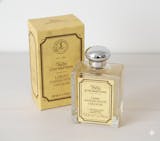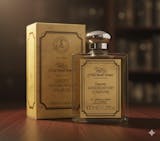The Ultimate Guide To Learning How To Use A Safety Razor

Learning how to use a safety razor is essential when achieving a clean and close shave without compromising safety. This trusted shaving tool offers the same level of precision as a straight razor but with added convenience and replaceable blades. Barbers and grooming experts rely on the effectiveness of a safety razor, making it a worthwhile skill to acquire for the best shave possible, free from cuts, nicks, and irritations.
By embracing the art of using a safety razor, you unlock a world of enhanced wet shaving experiences. The replaceable blades ensure sharpness and efficiency and make shaving cost-effective. You can achieve a smooth and polished appearance with some practice and technique, elevating your grooming routine to new heights.
- Safety Razor Vs. Other Shaving Tools
- Benefits Of Shaving With A Safety Razor
- How To Shave With Safety Razor
- Different Kinds Of Safety Razors
- The Best Safety Razor For Beginners
Safety Razor Vs. Other Shaving Tools
 Safety razor offers a modern and safe balance between a cartridge and straight razor.
Safety razor offers a modern and safe balance between a cartridge and straight razor.
Safety razors are a classic and effective grooming tool that offers a superior shaving experience compared to cartridge razors, straight razors, or disposable razors. Cartridge razors offer convenience but often cause razor burn, while straight razors require skill and can be hard to learn and maintain. Disposable razors, on the other hand, lack durability and can be harsh on the skin. Safety razors strike the perfect balance, providing a close, comfortable shave while reducing skin damage and ingrown hairs.
Benefits Of Shaving With A Safety Razor
A reusable safety razor offers numerous benefits for shaving enthusiasts, including a quality shave, reduced skin irritation, cost-effectiveness, and environmental sustainability. Its single blade also contributes to a greener environment by reducing plastic waste, making it the best alternative to a cartridge razor.
- Closer Shave: You get a closer shave with a safety razor with its sharp, single edge blade and with less irritation than disposable razors or cartridge razors.
- Reduced Skin Irritation: The single blade of a safety razor minimizes skin damage, razor burn, and razor bumps, making it perfect for all kinds of skin, even sensitive ones.
- Cost-Effective and Eco-Friendly: These razors are a cost-effective choice as safety razor blades are cheaper than disposable cartridges,1 saving you money in the long run. Moreover, they are a plastic-free alternative producing less waste.
- Precise Control and Timeless Design: With its precise control and timeless design, the safety razor embodies the spirit of independence, empowering individuals to take charge of their grooming routine.
These benefits serve as a true testament that shaving with multiple blades or multi-blade razors doesn't guarantee a close shave and that safety razors, like other single blade razors, provide a superior way of grooming and getting rid of your facial hair.
How To Shave With Safety Razors
Shaving with safety razors may initially seem more intimidating than using cartridge razors.2 However, with these beginner-friendly techniques, you can overcome troubles and achieve a close and comfortable shave, free from irritation.
Things You'll Need
Learning how to use a safety razor can be fun and rewarding. Having the right tools by your side speeds up the learning process and lets you enjoy the full benefits of a traditional wet shave while using a safety razor.
To shave with a safety razor, you'll need the following:
- Safety Razor: A double-edged razor with one blade that provides a close and precise shave.
- Shaving Brush: Creates a rich lather, exfoliates the skin, and lifts the hair for a smoother shave, usually made with animal hair.
- Shaving Soap or Shaving Cream: Lubricate the skin and hair and prevent nicks and cuts.
- Safety Razor Blades: The replaceable blades for your safety razor should be sharp and of high quality for optimal performance.
- Alum Block or Aftershave: These products soothe the razor burns, bumps, and provide a refreshing finish to your shaving routine. It can also stop a shaving nick from bleeding.
The Process Of Safety Razor Shaving
1. Know Your Hair Growth
Run your hand across your face to feel the grain to determine the direction of hair growth. Shave with the grain or follow the direction your hair grows.
2. Pre-Shave Skin and Beard Prep
Before shaving with a safety razor, apply a hot towel or warm water to your face for a few minutes to soften the hair. This opens the pores and creates an ideal shaving environment for your razor blade.
3. Lathering with Shaving Cream or Soap
Create a rich lather using a high-quality shaving soap, shaving gel, or shaving cream. To use a shaving soap, wet a shaving brush with hot water and swirl over the soap, and apply the lather to your face in circular motions to remove dead skin cells for a more skin-level shave.
4. Choosing Safety Razor Blades
Choose only the best safety razor blade for hair type and skin sensitivity, opting for stainless steel or platinum-coated safety razor blades for durability and sharpness.
5. Position the Razor Properly
Shave with a safety razor at a 30-degree angle against your skin. This ensures optimal contact with the hair while minimizing the risk of cuts.
6. Short Strokes & Mild Pressure
Use short, controlled strokes and apply pressure lightly on the razor handle. Let the razor's weight do the work, allowing for a smooth and gentle shave.
7. Shave with the Grain
Start shaving in the direction of hair growth for the first pass using straight, short strokes. This helps minimize the risk of irritation and ingrown hairs.
8. Use the Other Side of the Razor Head
As you shave, the razor head may accumulate hair and debris, leading to clogging. Provide a fresh blade edge by flipping the razor over for the second pass, maintaining the efficiency of the razor blades. Wash away any shave gel or lather, and continue shaving with the other side.
9. Shave Against the Grain
For a closer shave, shave against the grain twice on the second pass and not in the same direction. Exercise caution and apply minimal pressure. Add more lather if needed and remember to use short strokes.
10. Rinse with Cold Water
When you finished shaving, rinse your face with cold water, not hot water, to close the pores and soothe the skin. This helps reduce redness and inflammation.
11. Apply Aftershave
Finish your shaving routine by applying a soothing aftershave or post-shave product. Look for options that contain natural ingredients, like essential oils, to nourish and protect your skin.
Shaving this way and using the right tools, such as quality double-edge safety razors and suitable shaving products, you can achieve a superiorly close shave while minimizing post-shave problems and ingrown hairs.
Remember to checkout this guide on cleaning safety razors to learn how to keep your shaves hygienic by maintaining your safety razor.
Different Kinds Of Safety Razors
 Some safety razors come in a 2-pc design, opening the razor head for blade replacement.
Some safety razors come in a 2-pc design, opening the razor head for blade replacement.
Safety razors can be open-comb, closed-comb, two-piece, one-piece, or adjustable. Closed comb razors are gentle on sensitive skin but aggressive on thick hair. One-piece razors have a twist-to-open mechanism, while two-piece razors make blade replacement easier. Adjustable razors provide a comfortable and effective shaving experience.
The right type of reusable safety razor3 should suit your shaving needs and personal preference. Choose from the following:
- Open Comb Safety Razor: This safety razor has a comb-like design with small teeth or grooves along the razor head. It shaves more aggressively, making it ideal for coarser hair.
- Closed Comb Safety Razor: The blade is protected by a solid safety bar, providing a gentler shave ideal for beginners and sensitive skin.
- Two-Piece Safety Razor: A handle and head with a removable top cap hold the blade in this design. Its two-piece design makes blade replacement and cleaning easy.
- One-Piece Safety Razor (Butterfly/Twist-to-Open): This razor opens for blade insertion with a hinge. It allows quick blade changes without disassembling the razor.
- Adjustable Safety Razor: These razors have a customizable blade exposure, giving you the flexibility to adjust the aggressiveness of the shave to your preferences and beard type, from thin to coarse hair.
Each type of safety razor offers unique benefits, and each razor feels different. Exploring these options can help you find the perfect razor, ensuring a comfortable and perfect shave.
The Best Safety Razor For Beginners
 A complete shaving kit with a closed-comb safety razor is best for beginners.
A complete shaving kit with a closed-comb safety razor is best for beginners.
Choosing the right safety razor can make a world of difference in achieving a clean and polished look while boosting your confidence. When finding the perfect safety razor for beginners, look for a safety razor with mild to moderate blade exposure. This helps minimize the chances of nicks and cuts, ensuring a smoother and safer shaving experience. Additionally, selecting a razor with a longer handle can enhance grip and control, allowing for more precise shaving movements.
Naked Armor's Bleoberis Safety Razor Kit offers a luxurious, effective shaving experience with high-quality materials, precision craftsmanship, and a sleek design. It includes a closed-comb double-edged safety razor and shaving accessories such as a shaving brush and stand, making it suitable for beginners and seasoned shavers.
So, why settle for anything less than the best? Upgrade your grooming routine with Naked Armor's Bleoberis Safety Razor Kit and experience the difference it can make in achieving a clean, polished look with ease and confidence.
More Naked Armor Reads
Safety Razor Vs. Straight Razor
How Long Do Safety Razor Blades Last?
Five Alternatives To A Disposable Razor
References
- Are safety razors cheaper? Jungle Culture. https://jungleculture.eco/blogs/news/are-safety-razors-cheaper. August 22, 2021
- How difficult was your first DE Shave ? Reddit. https://www.reddit.com/r/wicked_edge/comments/6s11q0/how_difficult_was_your_first_de_shave/
- Different Types Of Safety Razors. Bespoke Unit. https://bespokeunit.com/shaving/safety-razor/types/




























Leave a comment